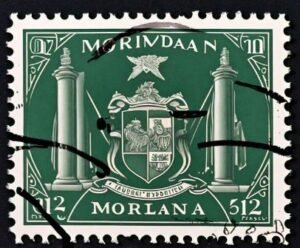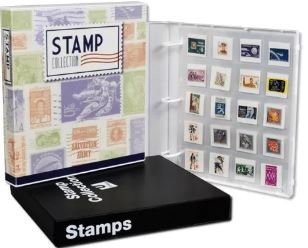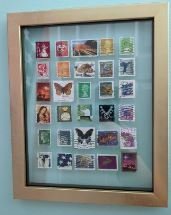Stamp collecting is more than just accumulating rare and interesting pieces; it’s about telling a story and presenting your collection in a way that does justice to its history, rarity, and beauty. Whether you’re showcasing your stamps for a local exhibit, sharing your collection with friends, or simply displaying them in your home, mastering the art of how to create a stamp collection display is essential. The way you present your stamps can make a significant difference in how they are appreciated and understood. In this article, we’ll guide you through the steps to master the art of how to create a stamp collection display and present your stamps with style.

Why Displaying Your Stamps with Style Matters
Before diving into the process, it’s important to understand why a well-designed display is so crucial. A great display doesn’t just keep your stamps safe; it elevates them, allowing their unique characteristics and historical significance to shine. Mastering the art of how to create a stamp collection display means knowing how to highlight the most important features of your collection, such as rare stamps, thematic groups, or stamps with historical value. It allows you to share your passion with others, while also protecting your valuable investment.
A well-thought-out display also improves the longevity of your stamps. Proper mounting and presentation ensure that your stamps stay in good condition for years, preserving their value. Now, let’s explore how you can present your stamps with style.
Step 1: Choosing the Right Display Method
The first step in mastering the art of how to create a stamp collection display is choosing the right method for displaying your stamps. There are several options depending on the type of display and the resources available to you. The key here is to choose a method that enhances the beauty of your stamps while protecting them.
- Stamp Albums: For beginners and casual collectors, a well-organized stamp album is a great option. Choose albums with acid-free pages and high-quality mounts to preserve the stamps’ condition. You can organize them by country, theme, or era to create a cohesive collection.
- Frames and Shadow Boxes: If you want to create a more permanent, visual display, framing your stamps is an excellent choice. Framing allows you to showcase individual stamps or small groups, turning them into pieces of art. Shadow boxes offer depth and the opportunity to add other items related to your collection, such as postmarks or letters, for a more dynamic presentation.
- Display Boards and Exhibits: If you’re preparing for a stamp exhibit or public display, you’ll need to organize your stamps on a display board. This method allows you to group stamps thematically, and you can include explanatory captions or information to provide context for the audience. Mastering the art of how to create a stamp collection display for an exhibit means balancing aesthetic appeal with educational value.

Step 2: Organizing Your Collection
When mastering the art of how to create a stamp collection display, organization is key. It’s not just about slapping your stamps on a page or a board; it’s about arranging them thoughtfully so that the viewer can appreciate both their beauty and their significance.
- Sort by Theme: If you have a thematic collection, such as stamps featuring animals, historical events, or specific countries, grouping your stamps by theme can help tell a compelling story. You could dedicate sections of your display to different themes, with clear boundaries between them to guide the viewer’s eye.
- Chronological Order: For those focusing on stamps from specific periods or countries, organizing stamps chronologically can highlight their evolution. For example, a collection of U.S. stamps could start with early issues and progress through the years, showcasing how design and printing techniques changed over time.
- Rarity and Value: A good rule of thumb is to place your most valuable and rare stamps in prominent positions within your display. This will allow those stamps to be appreciated immediately, but make sure they’re protected and easily accessible for viewing.
- Balance and Spacing: Ensure that your display is balanced in terms of the visual weight of the stamps. Don’t overcrowd sections, as this can detract from the overall aesthetic. Leaving some blank space or using larger mounts for key stamps will allow them to stand out. Mastering the art of how to create a stamp collection display means creating a harmonious layout that makes the collection visually appealing.

Step 3: Mounting and Protecting Your Stamps
No matter how well you organize your stamps, poor mounting can detract from the overall effect and put your collection at risk. Mastering the art of how to create a stamp collection display also involves choosing the right mounting techniques to protect and present your stamps.
- Mounting Materials: Use acid-free, archival-quality mounts or stamp hinges. These materials will keep your stamps secure without damaging them. Avoid using glue or tape, as they can cause permanent damage to the stamp’s surface.
- Using Clear Plastic Sleeves: If you prefer a more flexible solution, clear plastic sleeves can be an excellent choice. They allow the viewer to see both sides of the stamp while keeping it protected from dirt, moisture, and physical wear.
- Framing for Display: When framing, use UV-protective glass to shield your stamps from harmful sunlight, which can cause fading over time. Consider using a backing board to keep your stamps firmly in place and prevent them from shifting.
- Avoid Direct Handling: When interacting with your collection, always wear gloves to avoid transferring oils from your skin to the stamps. If you’re displaying stamps in albums or frames, limit direct handling to maintain their condition.
Step 4: Lighting Your Display
Lighting plays a critical role in mastering the art of how to create a stamp collection display. The right lighting will highlight your stamps and draw attention to their details, while poor lighting can make them difficult to see or cause them to appear flat.
- Use Soft, Indirect Lighting: Bright, direct light can fade stamps and create glare. Instead, opt for soft, indirect lighting that will illuminate your display without risking damage to the stamps.
- Consider LED Lights: LED lights are energy-efficient and produce little heat, which makes them ideal for illuminating a stamp collection display. Position the lights so they shine evenly on your collection without casting harsh shadows.
- Spotlighting Key Stamps: For particularly rare or valuable stamps, consider using small spotlights to draw attention to them. This can create a dramatic effect and allow the viewer to appreciate the details of these standout pieces.

Step 5: Adding Context and Educational Value
To take your display to the next level, consider including educational elements that enhance the viewer’s experience. Mastering the art of how to create a stamp collection display involves more than just arranging your stamps; it’s about telling a story.
- Captions and Information: Include informative captions or small plaques next to your stamps to provide context. This could include the country of origin, the year of issue, and any historical significance.
- Use of Themes or Narratives: If your collection revolves around a specific theme, create a narrative that explains why these stamps are important. For instance, if you’re displaying stamps from the early 20th century, share their historical context—why were they issued and what did they represent?
- Create Sections or Panels: If you’re working with a larger display, consider using sections or panels to divide the display into digestible pieces. Each panel could tell a different part of the story behind your collection.
Conclusion
Mastering the art of how to create a stamp collection display requires a combination of organization, creativity, and careful preservation. Whether you’re displaying stamps for personal enjoyment or preparing for a formal exhibit, your goal should always be to present your stamps in a way that respects their value, history, and artistry. By thoughtfully organizing your collection, using the right mounting and lighting techniques, and adding context through captions and narratives, you can create a display that both showcases your passion and protects your investment.
Presenting your stamps with style isn’t just about aesthetics; it’s about making your collection come to life and allowing others to appreciate the beauty and significance of every single piece.



